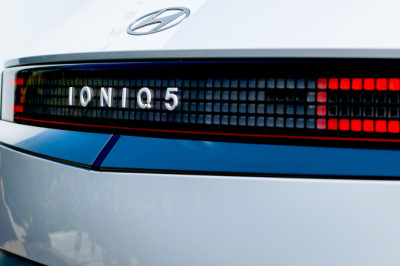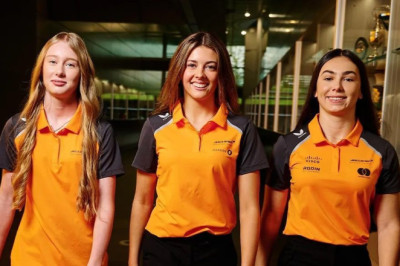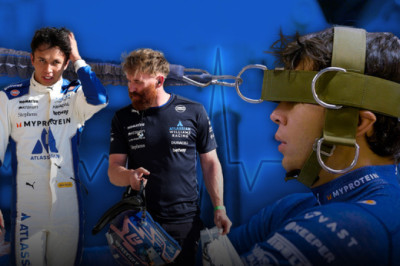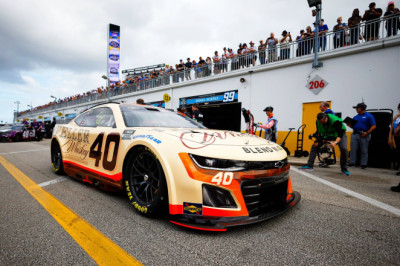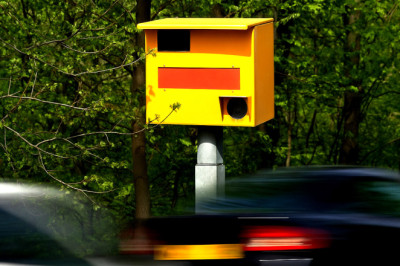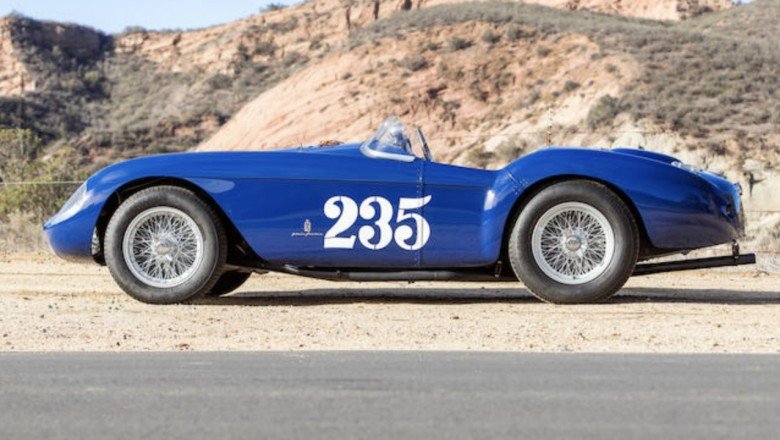
Featured Auction - 1954 FERRARI 500 MONDIAL SERIES I SPIDER
Estimate (US$): 5,000,000 - 6,000,000.
The ex-Porforio Rubirosa, John von Neumann, raced by Phil Hill and Richie Ginther
1,984cc DOHC All-Alloy 4-Cylinder Engine
2 Weber DCO Carburetors
160bhp at 6,500rpm
4-Speed Manual Transaxle
Independent Front Suspension – Live Rear Axle
4-Wheel Hydraulic Alloy Drum Brakes
*Unrivalled provenance with roll call of racing and celebrities of the day
*Extensively documented with massive history file containing lovely period images
*Comprehensively restored by Ferrari Classiche
*Red Book Ferrari Classiche certified and Marcel Massini report on file
*Pebble Beach Concours d'Elegance 1st in Class Award
*Eligible for the most prominent events including the Mille Miglia
"In addition to its extensive competition career, this blue spyder also has celebrity fingerprints all over it. How about Porfirio Rubirosa, the Dominican Republic Playboy/Diplomat, Zsa Zsa Gabor and James Dean from the entertainment business and future world champion Phil Hill, John von Neumann and Richie Ginther from Ferrari's West Coast race history?"
FERRARI'S WORLD CLASS RACER - THE MONDIAL
In 1952 and 1953, Enzo Ferrari had taken the world by storm, with back to back wins in the FIA's new Grand Prix-class Driver's World Championship. The motor manufacturing company that he had created immediately postwar on the back of the incredible success that his Scuderia Ferrari had achieved 1930-37 running Alfa Romeo cars – and from 1933 their Works cars - was already set for greatness.
Legendary racer Alberto Ascari had moved over from the Maserati team to pilot Mr. Ferrari's Grand Prix cars, producing outright Championship victory, first in 1952 and then for the second consecutive year, in 1953. Those seasons were run to 2-liter unsupercharged Formula 2 rules, and so the victorious Ferraris were their iconic '500' series 4-cylinder single seaters, their tapered 'cigar' shape being immortalized as miniature cars in every boy and girl's toy box!
At the heart of those victories were power units designed by Aurelio Lampredi, who had created a series of new, naturally-aspirated engines, initially larger-capacity V12 designs, then these 2-liter four cylinder units, which adhered to the nomenclature that the company chose at that point signifying the unit capacity of a single cylinder, being approximately 500cc. They were cast in light alloy, with hemispherical heads and featured screw in steel liners, with dual magneto ignition. These torquey boisterous units produced more than 170bhp. A Lampredi engined 500 F2 car made its debut in the 1951 Formula 2 events.
With the growing appeal of Sports Car Racing, Ferrari would also employ these units to build road/race cars for which he was seeing growing potential. He cleverly had that unit blended into a more accessible sports racer that he could sell to the increasing number of privateer gentleman racers of the period, and true to form christened it the 'Mondial' (Italian for World – as in World Champion).
For coachwork Ferrari turned to the two local houses, Scaglietti and Pinin Farina, both creating wind cheating barchettas with higher waist lines than their predecessors, in line with current design traits. In all, some 27 Mondial Ferraris were constructed, 2 coupes, and the rest as open sports racers, the balance swings slightly in Pinin Farina's favor with 14 coming from their house, and earlier cars such as this can be differentiated by their windshields running flat across the scuttle. Pinin's cars also evolved over the course of production, the earliest one mirroring the pronounced noses of their 375MM, whereas later cars like this having a lighter stance.
The earliest Mondials were in commission by March 1954 and were ready to campaign the Mille Miglia in May that year. There, Vittorio Marzotto drove a Works entry, and two further 500s were fielded by privateers, he brought the new car home in 2nd Overall, ironically behind Ascari's Lancia D24.
They proved as equally effective on the road as the track, Lampredi's torquey 4 cylinder marrying well with a lightweight frame and bodywork to give it a nimble edge. It was a winning combination and would spawn a whole generation of sports racers for which the company is best known. The next iteration of 500s had their cylinder heads painted red, and accordingly those new cars were named 'Testa Rossa', need we say more...
And, it can be argued that there was no more famous owner than the purchase of this one, 0438MD, enter Porfirio Rubirosa.
LAST OF THE INTERNATIONAL PLAYBOYS
Porfirio Rubirosa was a man of many talents, to put it mildly. He was a gifted diplomat, an exceptional polo player and a talented amateur racecar driver. Most of all, however, he's regarded as perhaps the greatest international playboy of 20th century.
Born in the Dominican Republic and raised in Paris, Rubi, as he was affectionately called, was cultured, charismatic, masculine, stylish and mysterious. Possessing charm in spades and endowed with a special physical characteristic (immortalized in ink by Truman Capote), he was, as a good friend and polo teammate said, the definitive man's man – every man wanted to be him and every woman wanted to be with him.
The legendary bon vivant lived a glamorous, jet-setting lifestyle that could only be equaled at the time by fictional character James Bond. And as the ultimate lothario, Rubi was linked to all the grand leading ladies of the day – Ava Gardner, Jayne Mansfield, Dolores del Rio, Marilyn Monroe and so many more. He was a guest of the Kennedys in Hyannis Port and the Dubonnets in Cap Ferrat, he went out on the town with Sinatra, did business with the De Rothschilds, and spent holidays in Saint Moritz, Saint Tropez and Palm Beach.
Rubirosa's international position came by way of his employer, friend and former father-in-law, the Dominican Republic president-dictator Rafael Trujillo, who remarked that Rubi was most excellent at his job as ambassador because, "Women liked him and he was a wonderful liar." His lavish lifestyle, however, was supported primarily by two of his wives who, not coincidentally, were the richest women in America – heiresses Doris Duke (American Tobacco Company) and Barbara Hutton (Woolworth's).
Although his greatest passion was polo, he owned and flew airplanes – namely converted B52 bombers and owned and raced a string of sports cars – namely Ferraris. His love for fast Italian cars was not merely capricious. He competed in the 24 Hours of Le Mans, Sebring, Reims and the Carrera Panamericana, for example. And when not on the track, Rubi still drove as if he were – with gusto and zeal. Francesca Hilton, daughter of hotel magnate Conrad Hilton and Zsa Zsa Gabor (another of Rubi's lovers), said, "He loved racing his Ferrari 100 miles an hour around the curves on Sunset Boulevard. He was like a big kid!"
By 1954, Rubirosa was arguably in the peak of his notoriety, and as the desirability of Ferrari on the international racing scene grew, owning one of these sports racers, would have matched his character perfectly.
Built as the 11th of 12 first series Mondial spiders, it was produced at the factory starting with engine assembly in March 1954, completion of the chassis two months later, and eventual sale in July 1954 to 'Rubi'. Temporarily registered for the road with Bologna plates, like its jet setting owner, the racer was shipped to New York, then flown across the States to Santa Barbara on the first day of September ready for the Labor Day races on the weekend of the 4th and 5th.
There in the paddock, he paraded his new material toy, the Ferrari as well as his new beau Zsa Zsa Gabor. Not for him a bright red Italian racing colors, instead his brand new barchetta stood out in a rich deep blue scheme, while Gabor wore a light blue dress! Quickly getting to grips with the car, he posted a second in class and seventh overall, but for some reason, perhaps he was made an offer that he couldn't refuse within the weekend, the car taken over by another luminary of the day, John von Neumann.
SOCAL'S AUTOMOTIVE TASTEMAKER
Johnny von Neumann was a pioneer in post-war California road racing and automotive culture. An active and successful amateur racer, he was one of the original founders of the California Sports Car Club and, as owner of the highly influential Competition Motors, is regarded as the man who introduced both Porsche (not to mention Volkswagen) and Ferrari to California.
In the 1950s, Competition Motors was the place for Hollywood's elite to buy their sports cars and for racers to have their cars prepped. As the Porsche factory distributor for the West Coast of America, Neumann is perhaps best known as the catalyst for the creation of the Porsche Speedster, as it was he who persuaded Porsche executives to build what is now considered one of the most iconic sports cars of all time.
Later, after having successfully raced Ferraris and employing drivers such a Phil Hill, Neumann became the southern California dealer for Ferrari. Again, he would be instrumental in the creation of one of the world's most prized sports cars – the Ferrari California Spider – after convincing Ferrari executives to build an open-top Berlinetta.
0438 MD would be von Neumann's first Ferrari. Re-liverying the car to more traditional Rosso Corsa within the month he was in action at Palm Springs, placing first in class EM2 and 2nd overall in Race 3. Further south at the Torrey Pines 6 Hours in November he shared the drive with his mechanic William Pringle, placing a commendable 2nd overall. And so this pattern would continue for the next 2 years as his team grew. When the time came to go back to Santa Barbara in 1955, 0438 MD drew its next brush with fame...
THE IMMORTAL REBEL
James Dean needs no introduction. He is one of the most iconic American actors of all time, the quintessential rebel, and an arbiter of cool. Famous for his love of fast cars, there was nothing, save acting, he took more seriously than racing.
As an amateur racer, Dean competed in several races in his Porsche 356 Speedster, even winning the novice class and 2nd second place in the main event at the 1955 Palm Springs Road Races, and 1st in class and 3rd overall at Bakersfield. He entered the Santa Barbara Road Races but had to retire due to a blown piston. (He started at 18th position and moved up to 4th in just five laps). With time on his hands, he walked around the paddocks at Santa Barbara inspecting the various cars and talking to their owners, and was famously photographed admiring 0438MD. Photographers must have loved the sight of the passionate car guy assessing the Ferrari, as there are a handful of souvenir shots taken that day, which serve as some of the most iconic images of the star. As fate would have it, Dean stayed loyal to the Porsche brand, the rest being one of the sadder tales in history.
0438's career in the von Neumann stable continued through to the end of 1956, during which time it was campaigned by Neumann's team including Richie Ginther and Phil Hill who shared the drive at Torrey Pines, in January '56. In that endurance race, the engine relented at which point it was switched for a Monza 3 Liter unit, earning it the sobriquet of the Monzetta.
The next custodian of the Pinin Farina car was Lew Yates who would purchase it from von Neumann sans engine and keep it until mid 1959. He choose to equip it with a less costly to maintain Chevrolet V8.
Post Yates, its racing days were really over and the car was retired. The ensuing decades would see the car pass through numerous notable Ferraristi, including Richard Merritt, Ed Niles, then in the UK, Rodney Felton and David Black. American then European custody would follow, including use on the Mille Miglia in 2006.
6 years ago the car passed into its present ownership. Throughout this extensive career, 0438MD had eschewed an in depth, forensic restoration as is done in this modern era of collecting. The current owner wisely elected to return the car to the stable that it had emerged from in 1954 and committed it to a rebuild at the hands of the Ferrari Classiche program. As was his wish and the requirements of the program, it should return from Italy in 'as new' order.
Beginning in 2013, 0438MD was entrusted to the Ferrari Classiche department where Ferrari themselves undertook an exhaustive, yearlong nut-and-bolt restoration where every inch of the car was meticulously brought back to its new, as delivered state. Since Phil Hill had blown the original engine in the car's earliest competition days, Ferrari reproduced an identical engine, down to the most minute detail, to that of the original unit that the car initially left the factory with, in 1954. The original, born-with, gearbox and rear axle, front and rear suspension and brakes were all meticulously dismantled and brought back to new.
Importantly, the original riveted Pinin Farina bodywork was found to be in incredible original condition, needing little more than to be brought down to the raw materials before being brought back to its incredible, original livery. At the end of this extensive process at a considerable cost of more than 475,000 Euros, the Mondial left Ferrari's hallowed workshops for a second time, in the identical configuration and specification as it did when new in 1954.
The Ferrari made its debut again at the 2015 Pebble Beach Concours d'Elegance, there it won a Class honoring Ferraris raced at the Pebble Beach Road Races. A day later at the Annual International Concours of the Ferrari Club of America it took a Platinum award and further a coveted Phil Hill Trophy, awarded to the Best Competition Ferrari at the Concours. All being testament to the remarkable quality of the restoration and the presence that this sports racer garners. Ferrari historian Alan Boe subsequently chronicled the remarkable and unique history that 0438MD carries in the December 2015/January 2016 issue of Cavallino Magazine.
To pour over the history file on this fabulous Ferrari is a true step back in time, and it is almost difficult to believe that such an interesting set of photographs of the period can all relate to the very same car, today provides the magical opportunity to follow in those hallowed footsteps. Afterall, what is owning a historic car all about if it isn't recreating those wonderful bygone days of playboys, models and sports racing, and who hasn't ever wished that they were as cool as James Dean or Rubirosa? Now you can be!
Period action in the Mille Miglia in 1954 and 1955 ensures that the model retains eligibility for the Mille Miglia Storica today, as well as a whole host of the most evocative events on the planet. Associated with such illustrious personalities, this Ferrari Mondial Spider is a very special and highly significant piece of California car culture.
Ferrari Classiche
In 2006, in response to overwhelming customer interest, Ferrari established its own dedicated heritage department, Ferrari Classiche. The department would not only conduct its own premium restorations of Maranello-built motorcars, ensuring the highest possible degree of authenticity, but it would also set a new standard for heritage certification. With the growing recognition among the collector car community that no vehicle attribute is as prized as proven originality, Classiche established a two-tier system of certification that would attest to any vintage Ferrari's level of authenticity, or lack thereof.
The lower-level Classiche White Book was offered for cars that might not contain all of their original mechanical components but had been restored to a high degree with proper new-original-stock parts or faithful reproductions. For very special cars, the Classiche Red Book offered factory certification of the presence of all the original numbers-matching mechanical components and a faithful as-new presentation of the coachwork.
On December 10, 2014, chassis no. 0438MD was recognized by the Classiche department with the highly desirable Red Book certification. The Red Book confirms that the car is finished in its original cosmetic configuration of blue paint over a red interior, and that the major original mechanical components remain in the car. A Ferrari Classiche built and certified engine of the original Tipo 110 type was installed, with internal number 50MD. The gearbox and rear axle were certified as the original components to the car, as was the suspension and brake system. Engine ancillaries such as the massive Weber carburetors and Magneti Marelli magnetos was also given Ferrari's stamp of approval.
Most importantly, the Red Book certification indicates that the chassis and aluminum Pinin Farina-built bodywork is original and continues to comply with original factory specifications; a very rare feature of any sports racing car from the era.
The Red Book, therefore, unequivocally demonstrates the overall originality and correctness of 0438MD, assuring that the legendary Ferrari racer is as authentic as it is historically significant.






